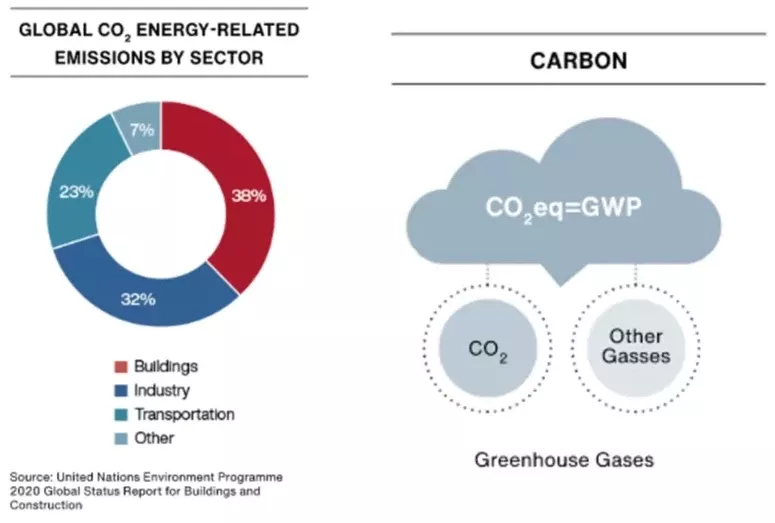
What’s the Point?
The impact of climate change is visible today and corporations need to enact meaningful change now. Communities and habitats across the globe have experienced extreme weather damage, sea-level rise, and natural disasters leading to billions of dollars of lost value.
Worldwide, researchers agree that if our planet experiences more than 2°C rise in global temperatures above preindustrial levels, irreparable global damage to ecosystems is expected. Recently, the Intergovernmental Panel on Climate Change (IPCC) has endorsed targeting 1.5°C as the maximum rise to limit the lasting effects on ecosystems.
Within this global climate context, the urban built environment plays a large role in climate health, as buildings alone are responsible for nearly 40% of global energy-related Greenhouse Gas (GHG) emissions. Reducing these emissions has become the goal of many worldwide organizations, including Hines. And the key climate culprit that real estate uses in the building and operation of buildings is carbon.
What is carbon?
The term “carbon” is commonly associated with climate change. Greenhouse gases include a variety of substances, such as carbon dioxide, nitrous oxide, and methane; however, carbon dioxide is the most commonly referenced among them and therefore “carbon” has become the shorthand vernacular used worldwide. The metric used to measure these gases and their effect on climate change is called Global Warming Potential (GWP), reported in kilograms of carbon dioxide equivalent, or “kgCO2eq.”
To reduce the impact buildings have on global carbon emissions, one must understand the cumulative impact of the processes, materials, and products that go into constructing a building by identifying the individual carbon impact of each component.
The classification of carbon emissions is often divided into two primary categories—embodied carbon and operational carbon.
Operational carbon accounts for the emissions from the energy used to actually operate a building. This includes the energy used to power the lights, HVAC, elevators, and other electricity and fossil fuel dependent aspects of a building.
Embodied carbon, on the other hand, accounts for the carbon emissions from all parts of the building’s life cycle. This includes the emissions from producing and transporting the building’s materials. Embodied carbon is unrelated to the building’s actual operations, but rather the construction processes, materials, maintenance, transportation, and lifecycle of the building’s parts.
Knowledge is power. To learn more, download our Embodied Carbon Reduction Guide or check out Our Plan for our Planet.

